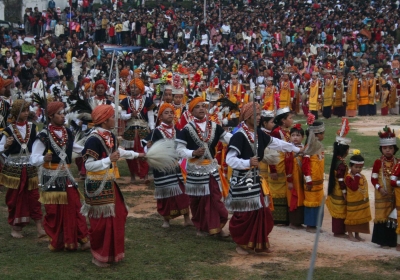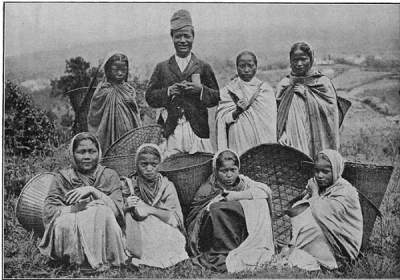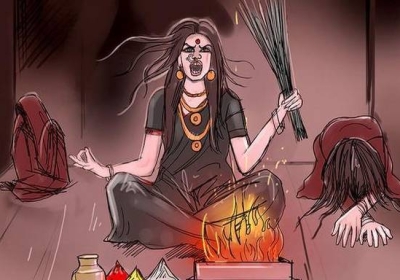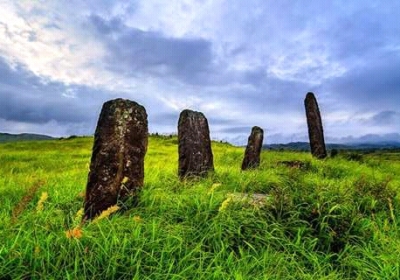Khasi Heritage: Sanctity of Divination
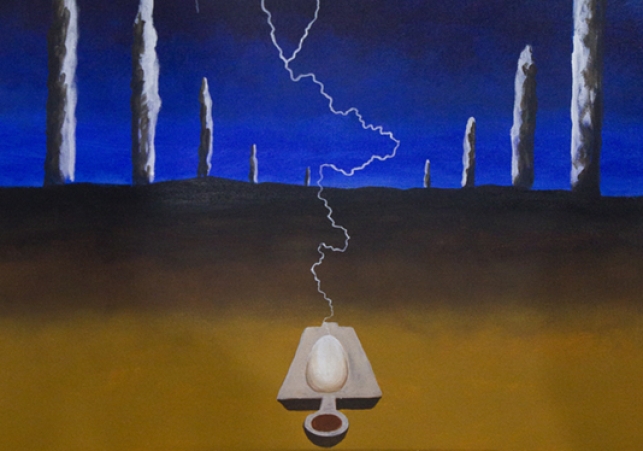
The other instrument of divine intervention in Khasi religious faith is the egg of a fowl. It is the binary cycle of incantation that indicates the consecutive germination, growth and maturity of the egg to the rooster, while the hen is never used for sacrificial purposes. Fresh fowl eggs are preferable on every occasion of ritual performances and the egg divination woodblock is sacrosanct to the Khasi religion. The egg divination woodblock or ‘Diengshat Diengkheiñ’ is carved out of a wood derived from a specific tree that was stuck by lightning. The egg divination woodblock struck by lightning is considered propitious and linked to the celestial realm. However, any woodblock from any hard tree bearing fruit is also suitable, but the fruit tree should be sweet fruit bearing tree. Earth and rice grains are basic components to be poured into the top portion of the woodblock before the actual egg divination performance. They signify the core of life and nourishment with the egg as the means to find out the signs and symptoms through the fragments of the shell and the position of the yolk. The fowl egg and entrails of the rooster are the means for the quest of signs and symptoms during the ritual performances. They are the binary universal symbols of the perpetual life cycle of every being in the universe. The fowl egg and rice grains are used for every divination in search of reasons and reveal the outcome from the signs and symptoms. When a person dies, an egg is placed in the navel of the deceased, called ‘Lengkpoh’. It serves as the life support for the departed soul, which precedes the ‘Yiar Krad Lynti’ rooster to pave the path to the abode of the dead during the funeral procession on the way to the cremation mound. The egg and rooster are binary elements that signify the life cycle and attaining enlightenment in life for mankind. They are the primary components of the universal divine manifestation of truth and righteousness, of spiritualism and faith. It is the inclusive spiritual understanding of life, which embraces the entire humanity. However, in the course of time, it became the exclusive religious tradition of the Khasi community and was confined to the followers of Seng Khasi. Therefore, it is important to comprehend the foundation of the deep-rooted folk tradition handed over by the ancestral ancient knowledge and endeavour to transcend beyond the cluster of a particular community.
In the course of time, other animals were also included in the performance of rituals and ceremonies and each one had a distinctive purpose and significance. The animals are usually domesticated cattle that are common in the community, primarily cows, pigs and goats. The sacrifice of these animals is in consonance with the prevalence of such animals in abundance in society. There is hardly any sacrifice of domestic animals like ducks, cats or dogs because they are not common for every household in the community or due to their specific encounter in the folklore. Regarding wild animals, except for those identified with the tradition of folk hunting practices, other wild animals are never used for sacrificial purposes. There is a particular folklore on every animal for their role and destiny in the encounter with human society, which determines them to be domesticated by humans or to remain wild in the jungle.
Some of the folktales are already narrated and some more are needed to enlighten about their specific purpose, conduct and behaviour and other natural phenomena of several animals. The cat was sent by the tiger for an important task to the human household, but it neglected the duty and adapted itself to the comfort of human hearth, thereby cheating the tiger and never returning to the wild. The magnitude of the fear was such that the cat acquired the habit of concealing its faeces because it was scared of the tiger. The goat, with its curved horns and elongated chin hair, appeared like a fearsome animal to the tiger, but he was amused by the misconception and chanted the weakling nature disguised in a robust face, which was overheard and revealed to the tiger, who thereafter pounced and reversed the perception. The creator witnessed the wastage of rice in human nutrients and sent the cow as an emissary to share the message of blessings for prosperity with a handful of rice grains to human beings, but it was delayed by the white crow who pecked the bugs and flies on the body of the cow. The cow was satisfied with the pleasant experience and fell into the temptation of the crow to deliver the opposite message to humans. Contrary to the divine covenant, humans were said to toil with hard-earned wages for survival, and the word remained a pledge to human society and the creator was subsequently aware of it and, with anger, pounced on the mouth of the cow and smashed its stomach, and covered the crow with a black earthen pot. The teeth from the upper jaw of the cow fell and one side of the stomach shrunk, and true to this tale, teeth are not available in the upper jaw of cows, while one side of the abdomen always shrunk and all crows became black. These folktales are parables with metaphors on human society that are perpetually relevant for generations.
After the commotion that arose from the snatching of the sword of the raccoon by the thunder and the culmination of the catastrophe following the humiliation of the Mother-Sun, the raccoon never gave up struggling for his precious sword. The dung beetle came to offer a solution to the raccoon and asked him to defecate in one place to create a mound to climb to heaven and fetch back his sword. The raccoon concurred with the idea of the dung beetle and actually did it as suggested with the hope that the heap of his faeces would reach heaven. Actually, the suggestion is to cater to the convenience of searching for food by the dung beetle, which has become an established habit for the raccoons. The reality establishes that raccoons are habituated to defecating in one place and the dung beetles feed on feces and create a large heap of mounds.
La shad mastieh u kui, la atnud sa u pyrthat;
U shad kynthui kynthui, u kaweh waitlam artat.
Kylliang pan u pyrthat, ka waitlam ka ba tyngshaiñ;
Phewse u knieh jynthat, sha suiñbneng kynting thalaiñ.
U kui u eit hajuh, sa u shkiah pat nang kyntur;
Kumno te u tipthuh, ban poi bneng ym lah mutdur.
U kui te ha u shkiah, tang biang bam la shah pynbieit;
Kyrsum ka khwan ka rhah, la kyntur ban kynton eit.
Ka eit te shi kynton, khlem poi bneng u kui bapli;
Sangsot u la shah phon, la sep ei arliang syrti.


